Fujian Provincial Key Laboratory of Naval Architecture and Ocean Engineering (Jimei University) is one of the Fujian Provincial Key Laboratories approved by the Fujian Provincial Department of Education in 2009, relies on Jimei University and successfully passed the acceptance checks of Fujian Provincial Department of Science and Technology in November 2011. The laboratory has a first-level doctoral program in Naval Architecture and Ocean Engineering, a first-level master programin Naval Architecture and Ocean Engineering, four secondary master programs (MarineEngineering, Design and Manufacture of Ships and Offshore Structures and manufacturing, Ship Electric Propulsion and Control, and Energy Engineering of Ships and Marine Installations), and a master’s degree in engineeringin the field of naval architecture and ocean engineering.It now runs 4 bachelor's degree programs in Marine Engineering, Naval Architecture and Ocean Engineering, Marine Electrical and Electronic Engineering, and Electrical Engineering and Automation. At present, the laboratory has 45 research and technical faculties, including 15 professors, 20 associate professors, and 6 lecturers, among whom25faculties hold PhD degrees.
The laboratory has a total area ofmore than 4,000 square meters of scientific research rooms and an office area ofmore than 1,000 square meters. The funds of purchasing scientific research equipmentare nearly 50 million RMB. There are 22 scientific research platforms for marine variable air volume air conditioning system, cold and hot water source devices with controllable temperature and flow, new refrigerant and high temperature heat pump test bench, ship equipment condition monitoring and remanufacturing technology, digital pool and ship performance research, ship oil monitoring technology, ship simulation power station research, Engine room integrated information system, virtual reality technology, ship integrated electric propulsion system, marine diesel engine performance research, heat pump drying test bench, ship waste heat adsorption refrigeration and air conditioning research, ship hydraulic system, etc.
There are four main research directions in the laboratory:
Ø 1. R&D and system integration of ship automation equipment
Establish a server-based new generation of ship automation system integration environment with FSC architectureaccording tothe operating parameters acquisition sensorsof various ship electromechanical equipment, the core control devices and the I/O modules, and the automation software such as configuration and database.
Establish an advanced ship power station, electric propulsion system and simulation control system.
Ø 2. Performance test of ship electromechanical equipment
Focuson the performance testing of ship power plants, ship power systems, deck machinery, ship hydraulic systems, and ship refrigeration systems.
Study on fault analysis and diagnosis, signal analysis and processing, expert systems, and other advanced technologies of ship’s important electromechanical equipment.
Ø 3. Ship digital design and manufacturing
Considering the high price of ship design software, the laboratory purchased ship design software and establisheda public platform for digital hull design and process designto avoid repeated purchases and causing unnecessary waste, which serves surrounding enterprisesand undertakes external technical trainings and design tasks.
Greatly improve the performance-price ratio of deck machinery by purchasing finite element and optimized design software and introducing modern design into the design of deck machinery and equipment.
Ø 4. Application and simulation of virtual reality technology in naval architecture and ocean engineering
The Lab established a ship and ocean engineering virtual reality product production platform and playback system by applying 3D modeling software, scene editing software, physics engine software, and graphics drive software. It focuses on investigating ship engine simulation mathematical modelsand developing a ship engine virtual operation training and evaluation system, a virtual test and virtual disassembly and assembly operating system in naval architecture and ocean engineering, a modern crew training base, and a product simulation base.
In recent years, the important achievements have been made in the research and development of ship turbine simulators, the application of solar energy on ships, the research of integrated electric propulsion systems for new energy cruise ships, the research and development of remote ship monitoring systems, and oil detection technology, which have produced a good society, economic and ecological benefits. In the past three years, the laboratory has undertaken 7 National Natural Science Foundation projects, more than 150 vertical projects such as provincial and municipal government funds, and more than 80 corporate technology research projects. The total research funding has reached more than 35 million RMB.It has obtained 8 national patents, 8 software copyrights, and two second prizes and one third prize of provincial and ministerial scientific and technological progress awards. More than 200 academic papers have been published, including 54 papers by three major retrieval institutions.Personnel with senior professional titlesaveragely published 2.5 academic papers per people.
The laboratory will focus on the hotspots and difficult issues in the field of shipbuilding and ocean engineering in Fujian Province, combined with the frontiers of international development, continue to conciseand improve the research direction and innovation goals, and actively undertake major national, departmental, and local scientific research tasks. The lab is aimed at becoming a base for innovative design, inspection and testing, and senior talent training for products and systems in the field of ship and ocean engineering in Fujian province, to serve the construction of the economic zone on the west coast of the Taiwan Straits, which of high domestic influence, and of international influence in individual fields.
“Digital Fujian” Satellite Communication and Ocean Monitoring Internet of Things Laboratory
The “Digital Fujian” Satellite Communication and Ocean Monitoring Internet of Things Laboratory was approved by the Fujian Provincial and Reform Commission in September 2017, relies on Jimei University. The laboratory chooses the marine environment, marine equipment, marine activities, and marine subjects as research objectand focuses on investigating the Internet of Things technology based on perception, satellite communication, and big data analysis. Through developing core modules, formulating Internet of Things related interface and protocol standards, and establishing related products Inspection and testing platform, a big data public service platform was built. The platform can provide solutions and technical support and services for enterprises and governments.
The laboratory covers an area of 900 square meters and is equipped with satellite communication ground station, Beidou satellite network, ship big data public service platform and narrowband Internet of Things. The laboratory currently has 20 full-time researchers, including 7 professors, 11 doctoral degree personnel, and the others with master’s degree. The laboratory relies on the first-level discipline doctoral program of Naval Architecture and Ocean Engineering. Doctoral and master students could be enrolled. At present, there are 2 PhD candidates in the laboratory and 15 graduate students.
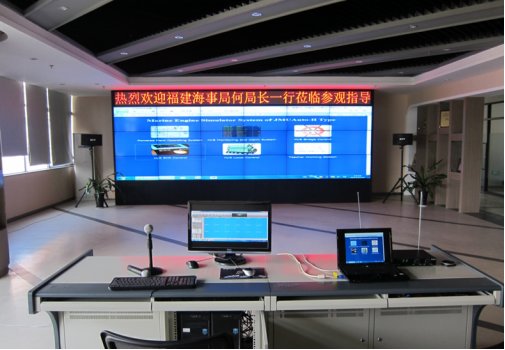
Collaborative Innovation Center for Common Key Technologies of Yacht IndustryinFujianProvince
Ø 1. Introduction to the platform
The Common Key Technology Collaborative Innovation Center of Yacht Industry in Fujian Province is composed of 8 cooperative organizations including universities, key yacht enterprises, inspection agencies, design institutes, competent authorities, etc. There are also 10 organizations in the alliance as cooperative units. In November 2012, the “Fujian Provincial Yacht Industry Technology Innovation Strategic Alliance" was approved by the Fujian Science and Technology Department as the third batch of provincial-level industrial technology innovation key strategic alliances. In October 2013, the “Fujian provincial Yacht Industry Common Key Technology Collaborative Innovation Center” was approved by the Fujian Provincial Department of Education, which listed in the cultivation plan for the capacity improvement of innovation of colleges and universities. In October 2015, it was identified as the second batch of “2011 Collaborative Innovation Centers” at the provincial level.
Ø 2. Comprehensive strength
The center has reformed the mechanism and system in terms of talent introduction, personnel recruitment, performance appraisal, talent training, resource sharing, etc. It fully gathered 8 discipline resources in the school and 18 innovative resources in the form of alliances. The overall improvement of innovation ability will be achieved around the trinity of talents, disciplines, and scientific research. The center has won 6 national projects, 30 provincial and ministerial projects, and nearly 15 million RMB of school fundings. The center established a school-running cooperation mechanism with the University of Genoa in Italy, designed and built 16 specifications for industry-wide yachts, established long-term strategic partnerships with 20 enterprises and institutions inside and outside the province, and made substantial breakthroughs in new product design and development, inspection and testing, etc. 11 solar-powered cruise ships, jointly and a multi-energy electric propulsion cruise ship were jointly developed. Yacht power propulsion inspection standard were also developed. It jointly designed and built 8 luxury yachts with independent property rights and 4 full-carbon fiber luxury catamarans.
Ø 3.Research technology
Various work was carried out around three common key technologies:
1) Design combining yacht concept and national emerging strategy
Research on multi-disciplinary integration in yacht design.
Research on yacht design and structural strength benchmark fusion key technology, applied to comfort, Large-span, reliable superyachts, and unmanned high-speed boats, etc.
2) Yacht construction technology research
Composite superyacht vacuum adsorption technology, yacht mold manufacturing research, etc.
3) Yacht inspection technology research
Research on inspection technologiesof various classification societies.
Full-cycle performance inspection technology combined with real boat test.
Setting specifications of yacht navigation mark, etc.
Ø 4. Software and hardware conditions
The existing software and hardware equipment is worth more than 15 million.
Ø 5. Open exchange activities
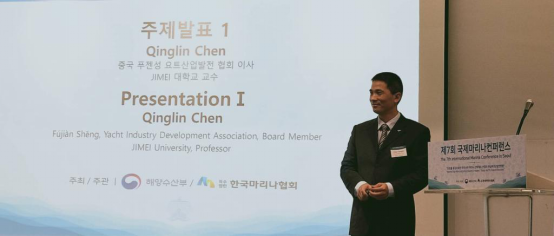
7th International MarinaConference
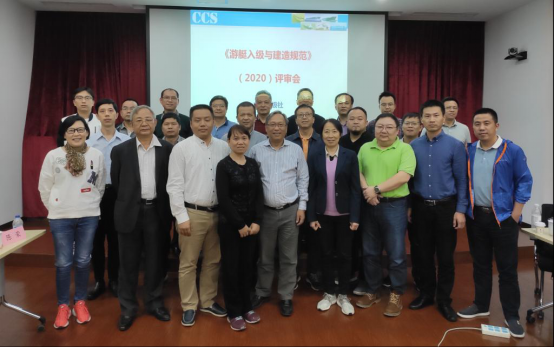
Review Meeting of CCS on October 15th, 2019
 Fujian ProvincialEngineering Research Center for Offshore Small Green Intelligent Ship System
Fujian ProvincialEngineering Research Center for Offshore Small Green Intelligent Ship System
Ø 1. Introduction
The Fujian Provincial Engineering Research Center for Offshore Small Green Intelligent Ship System relies onJimei University, and is jointly established by Xiamen Shipbuilding Industry Co., Ltd., Xiamen Hansheng Yacht Co., Ltd., Nanwei Software Group, Ningde Times Motor Technology Co., Ltd., etc. The project construction of the center was approved by the Provincial Development and Reform Commission in December 2020.
The Engineering Research Center has a total of 55 R&D personnel, including 24 professors, 20 associate professors, 11 lecturers, among whom 80% personnel hold the high professional titles. There are 42 teachers with a doctoral degree, 12 with a master's degree, and 5 PhDcandidate of on-the-job. The proportion of teachers with a master’s degree or above is 98%. The age structure of the team is reasonable, with 14 people aged 50-60 years old, 22 people aged 40-50 years old, and 19 people aged 29-40 years old.
The organizational structure of the Engineering Research Center is as follows:
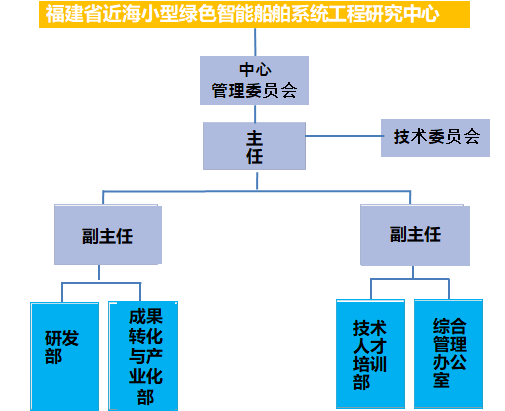
Ø 2. Technical direction
1) Small hull design and performance optimization
① Seakeeping enhancement technology for small ships;
②Optimization design technology for general layout of small ships;
③Small intelligent ship assembly technology and overall performance optimization;
④ Vibration optimization of small smart ships;
⑤ Green antifouling technology on hull surface.
2) Research and development of small ship propulsion system and optimization of energy allocation.
① Advanced electric propulsion device for small smart ships;
② A micro-grid system construction of offshore small smart shipsbased on multi-energy using new energy power generation technology, and the optimal configuration of energy for different ship types;
③Research on the power coordination control strategy,combining the propulsion device and the microgrid system, and development of the energy management system;
④ Research on green engine technology for small ships.
3) Autonomous navigation technology of offshore small smart ships
① Research on the sensing technology of small ships in the complex offshore environment;
②Research on intelligent path planning and automatic collision avoidance technology for offshore small vessels;
③Development of adaptive control algorithm for intelligent trajectory tracking of unmanned cruise ships.
4) Intelligent application of small intelligent ship system
① Marine communication technology and equipment research and development;
②Research and development of application platform of marine space-time basic data;
③Fast real-time verification technology for smart small ships;
④The Intelligence of Port;
⑤Development and application of green smart small ships.
Ø 3. Hardware and software conditions
There are 25 instruments with a set of more than 500,000 RMB. The total value of the instruments is more than 25 million RMB. The software and hardware equipment required for engineering and industrialization research and development mainly include: LMS noise and vibration test system, marine engine simulation, the key technology platform for intelligent navigation of all-electric ships, ship dynamic positioning simulation system, ship electric propulsion system, ship big data center, etc., which can basically meet the current research and development needs.
The layout is shown in the figure below.

The Key Laboratory of Marine Corrosion and Intelligent Protective Materials of Xiamen
Ø 1. Introduction
The Key Laboratory of Marine Corrosion and Intelligent Protective Materials of Xiamen was approved by the Xiamen Science and Technology Bureau and officially opened for operationOn January 14, 2021.
The laboratory is led by the chief scientistof National Defense 973 and has formed a high-level research team of 26 people, 20 of whom have doctoral degrees or senior titles.There are 4 national experts, including the vice chairman of the Chinese Society for Corrosion and Protectionand the chieftechnology expert of the national security majorbasic research program. The educational background, age and title structure of the lab are reasonable. In the past three years, one double-employed academician and twoMinjiang scholars were introduced, and 7 faculties and 9 faculties were particularly promoted to professors and associate professors, and a total of 23 postgraduates and doctors were trained.
The laboratory undertook 94 various scientific research projects, among which 6 projects are at the national level, and 33 are at the provincial and municipal level. 2 provincial and municipal science and technology awards were won, and 42 SCI/EI paperswere published, and 28 software copyrights and authorized invention patents wereobtained. The lab made major innovation breakthroughs in the basic research and application development of marine coatings. The director of the laboratory undertook 1 major national project and 2 provincial and municipal projectswith a vertical project fundings of 52.26 million RMB.
Ø 2. Organization structure
The laboratory conducts scientific research and academic activities under the leadership of Xiamen Science and Technology Bureau, relies on Jimei University (School of Marine Engineering). The laboratory has 1 director, 2 deputy directors, and 7 academic committee members (including 1 director and 1 deputy director). The laboratory implementsthe system that the director is thoroughly responsible and carries out scientific research and technology development activities under the guidance of the academic committee. The organization chart is shown in the figure below.
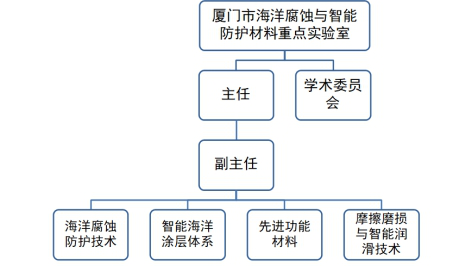
Ø 3. Research direction and hardware conditions
The main researchdirectionsare as follows:
1) Marine corrosion protection technology. Systematically carry out the research on the corrosion mechanism of material systems in the marine (deep sea) simulated environment andconstruct the environmental spectrum of material system in the deep-sea corrosion; Carry out the research on the optimization design of cathodic protection numerical simulation and research on remote control technology, which could provide technical guarantee for the reliable and safe service of marine equipment.
2) Intelligent marine coating system.
Design and prepare smart macromolecule polymers and micro-nano switch containers.
Design and develop smart anti-corrosion coatings.
Investigate the biological adhesion process on the coating surface.
Design and develop active anti-fouling and drag-reducing coatings.
3) Advanced functional materials.
Design and develop radar absorbing coating materials and vibration and noise reduction materials and structures.
Investigate the functionalization of material surfaces.
Design and develop structure-function integrated materials.
4) Friction, wear, and lubrication protection technology. In view of the power system and key components of marine equipment, the damagemechanism of friction and wear is explored, and new technologies for interface efficient and intelligent lubrication and intelligent protection are developed.
Ø 4. software and hardware conditions
The laboratory has a total area of more than 1,400 square meters of scientific research rooms. The original value of scientific research instruments and equipment of the lab is more than 20 million RMB. The software and hardware equipment of the lab have reached the international advanced level, formed a marine corrosion protection test and simulation system, an intelligent coating design and preparation system, aadvanced functional materialsdesign and synthesis system, and friction wear and lubrication intelligent protection technology development system. Theseequipmentcould meet the needs of various research directions in the laboratory.
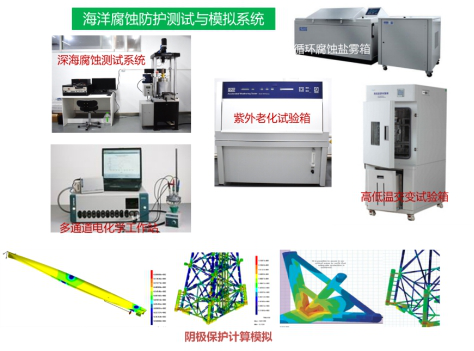
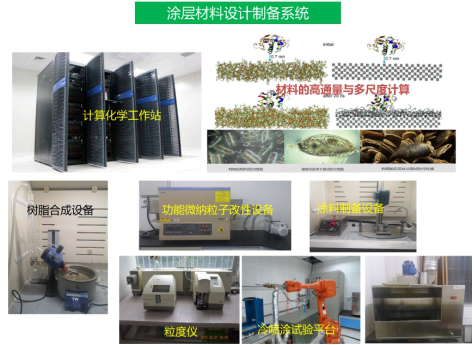
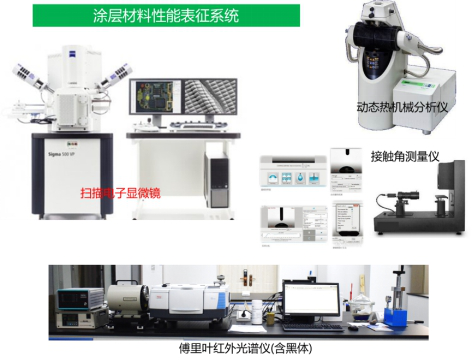
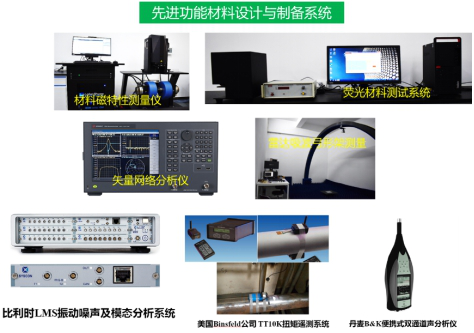
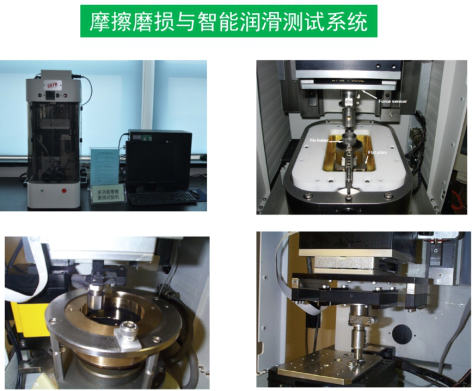
Ø 5. Open exchange activities
The laboratory conducts academic exchange activities with the tenet of “openness, mobility, union, and competition”. The lab has hosted 5 national academic conferences andinvited domestic and foreign experts to carry out technical exchanges. The lab carried out effective scientific research cooperation and external testing servicesand promoted the continuous improvement of laboratory research level.
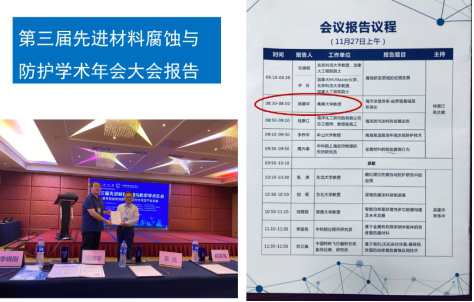
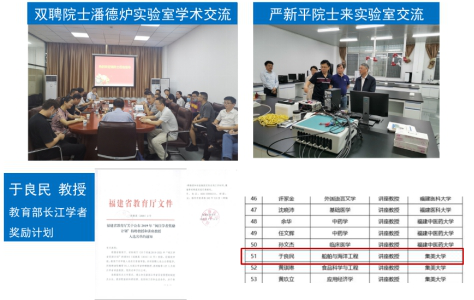
Ø 6. Transformation of Achievements
The laboratory focuses on the transformation of achievements, and has formed many technologies such as environmentally friendly high-performance heavy-duty anti-corrosion coatings, marine antifouling coatings, marine lubricating additives, nano-functional materials, cathodic protection simulation optimization design, etc. These technologies could guarantee safe service and technical and tactical performance of facilities, including large-scale surface ships, deep-diving equipment, marine engineering equipment,port engineering, wharf, etc.The lab can providetechnical consultation for enterprises in Xiamen and Fujian Province, and solvesome technical problems, which reflected the radiation and driving role of the laboratory and achieved obvious social and economic benefits.
The advanced marine anti-corrosion and anti-fouling technology developed by the laboratory has irreplaceable support and protection for the safe and efficient operation of Xiamen’s shipbuilding industry, marine engineering equipment design and manufacturing, municipal infrastructure, and industrial facilities, and has an important role in maintaining and increasing value, which have significant social value and economic benefits.
The advanced anti-corrosion and anti-fouling technology developed by the laboratory can guarantee the technical and tactical performance of marine equipment of China and has important military and economic significance; the advanced special functional materials will ensure the stealth performance of military facilities, and support the prevention of electromagnetic pollution in civilian facilities and the realization of low noise design goals; the developed series of nano-composite marine lubricating additives can be applied to marine diesel engines that using low-sulfur fuel oil, which has good practical value and economic benefits for reducing ship emissions and realizing the green operation and maintenance of ships.
The achievements of the laboratory will promote the development and upgrading of the new material industry and guarantee the quality of the construction of the cruise ship industry in Fujian province. They will support the intensive development of marine engineering equipment, avoid biological fouling hazards in marine ranch facilities, and enhance the development of the marine renewable energy industry.